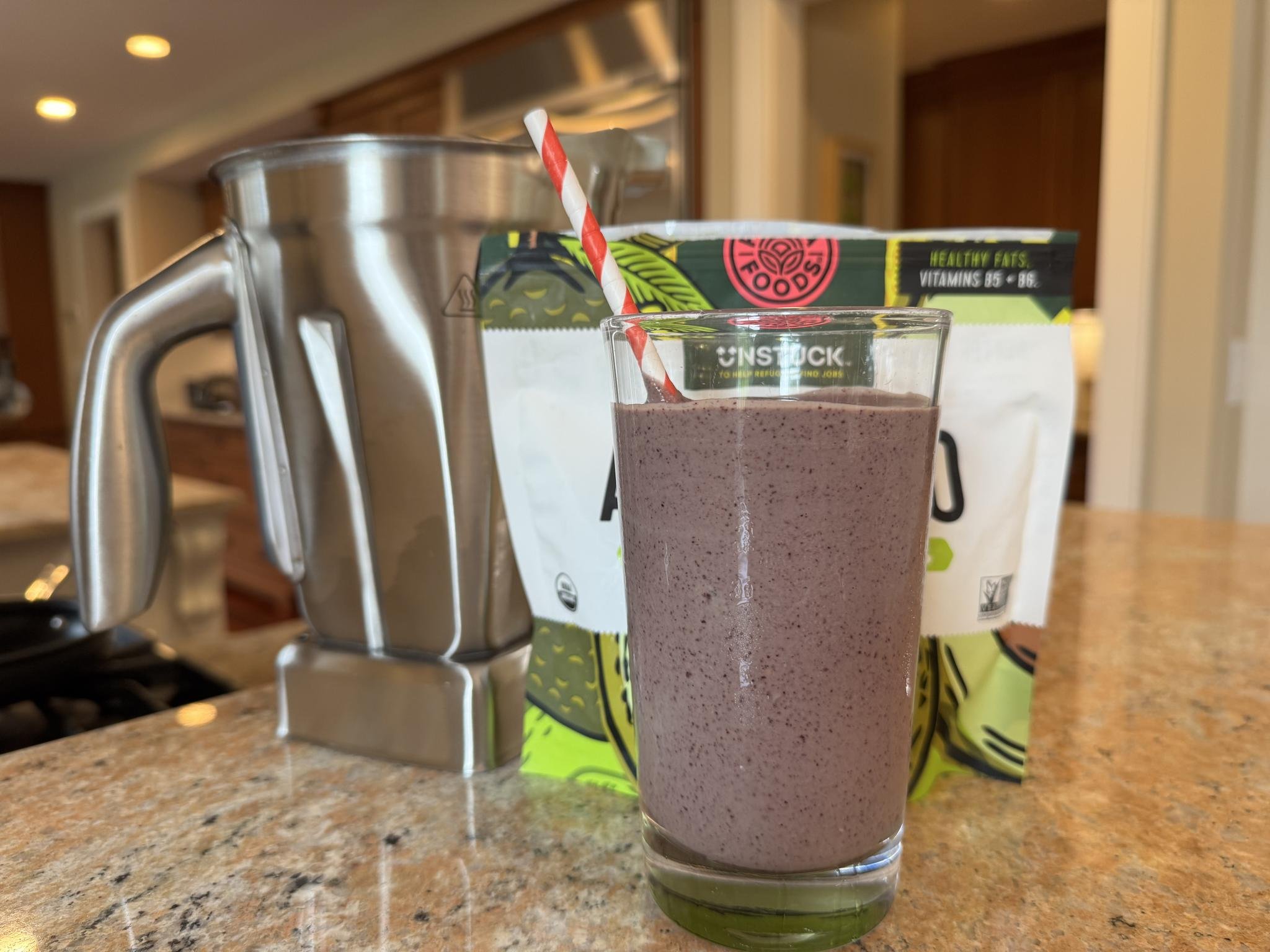This Smoothie Swap is a Game Changer!
I’m not one to be a fair-weather friend. And I don’t want you to think that I’m here to throw my tried-and-true, go-to smoothie fruit under the bus. Far from it. They’re inexpensive (even the organic ones!) and full of fiber, vitamins, and minerals. Beyond that, they brighten up a peanut butter sandwich and give a nice creaminess to those smoothies I mentioned. So, no, I’ll never give up my bananas.
But, lately, I’ve been swapping them out of my morning smoothie and it’s been a game changer.
What’s stepping in?
Avocado!
It might not be what first comes to mind when you think of smoothies, but maybe it should be.
Just like a banana, avocado adds a thick and creamy texture to any smoothie. So, why bother to make the switch?
If you look under the peel, these two fruits (yes, an avocado is technically a fruit) are vastly different.
Though both are good sources of vitamins and minerals, the avocado wins in both categories. It is more than twice as high in vitamin E, vitamin K, vitamin C, most of the B vitamins, and iron, plus – believe it or not – 25% higher in potassium.
That alone is worth it. But there's another collection of measures that have even more impact on the nutritional value of your smoothie: sugar, fiber, and fat.
It’s probably pretty obvious that avocados are lower in sugar than bananas. Now, I don’t worry too much about sugar from fruit in a varied and balanced diet – it’s a completely different game from added sugar in foods. But, when you’re most likely putting other fruits in your smoothie, it's good to moderate that. An avocado can be your answer.
When it comes to fiber, bananas are a good source, but avocados clock in at almost three times as much. They’re also a fantastic source of healthy fat – monounsaturated fats (MUFAs) and polyunsaturated fats (PUFAs), including omega 3s, to be exact.
Why do those two measures matter?
Both fiber and fat slow digestion and the rate your blood sugar rises after you eat. This means staying full longer and having sustained energy. (Of course, protein has to be part of the game, too, so please don’t leave that out! I like clean, plant-based protein powders best.)
If all of this hasn’t convinced you to give the swap a try, consider one more thing – the creaminess from the avocado really can’t be beat. My smoothies turn out just a little richer and… well… smoother. And, since avocado adds almost no flavor, it gives the other fruits a chance to shine. After all, you have to admit that bananas can dominate the room sometimes.
Go for organic avocado whenever possible. Once it’s ripe, peel it, cube it, and freeze. It’s a great way to prevent the waste that can happen when your avocado is ready to eat before you’re ready to use it. You’ll also find it already cubed in the frozen fruit section at the grocery store. If you prefer fresh fruit, go ahead, but I think frozen fruits create a better result. As for how much to use, anywhere from ⅓ to ½ cup of cubes does the trick.
The one thing to remember is that avocado tends to thicken a smoothie more than a banana, so you might need to adjust the amount of liquid or other ingredients. It’ll take some trial and error, but it’s well worth it!
So, does all this mean that my banana supply is doomed to grow ice crystals at the back of my freezer, never to be seen again? No way! I’ll definitely continue to use them, but it’s nice to know that I have an alternative that tastes just as great and serves my health even better.
Oh – and if you’re looking for a fun summer holiday treat, grab some popsicle molds and turn your favorite smoothie into a yummy dessert for adults and kids alike. My current go-to (pictured above) is 1 cup of almond milk, a serving of protein powder, 1-2 cups of greens like baby spinach or chopped kale, 1 cup of mixed blueberries/raspberries, and ½ cup cubed avocado. Give it a try and let me know what you think!
Happy Fourth of July!
Until next time… eat well!


